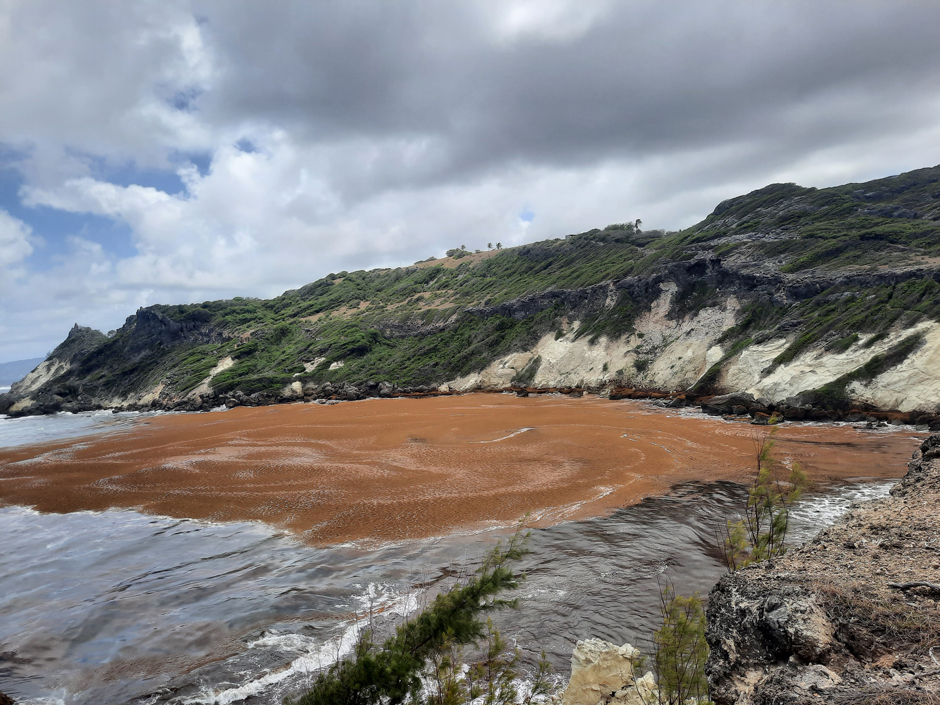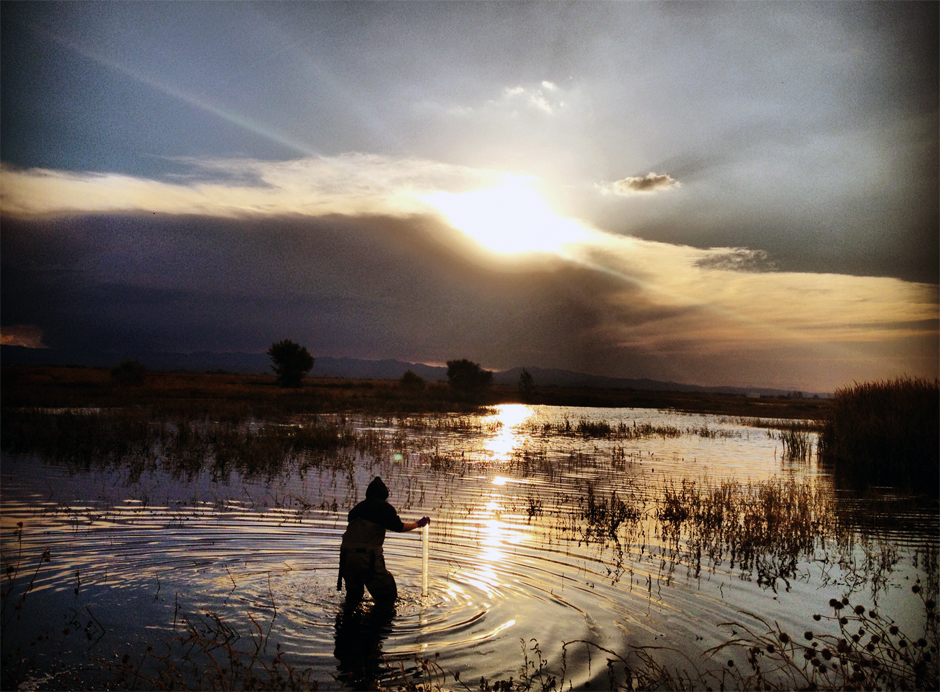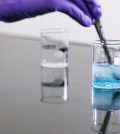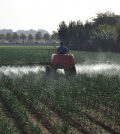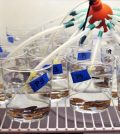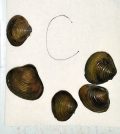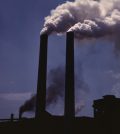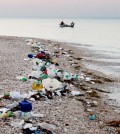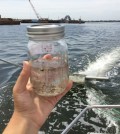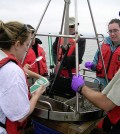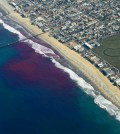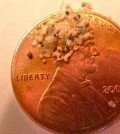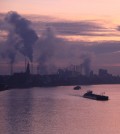Posts for tag "pollution"
Sargassum Surge: How Seaweed is Transforming our Oceans and Coastal Ecosystems
Until recently, Sargassum–a free-floating seaweed–was distributed throughout the Sargasso Sea, the north Caribbean Sea, and the Gulf of Mexico. But in the space of a decade, this seaweed has, as one scientist remarks, “Gone from a nonfactor...
- Posted March 24, 2025
California’s Marine Pollution Studies Laboratory at Granite Canyon Provides the Latest Research in Environmental Toxicity Monitoring
The Marine Pollution Studies Laboratory at Granite Canyon has been instrumental in the formation and continuing evolution of West Coast aquatic toxicology studies.
- Posted April 15, 2019
Sustainable, Sponge-like Material Takes the Color Out of Dyes
A team has created a sponge-like material of nano cellulose made sustainably from wood pulp and palladium particles that removes color from dye in water.
- Posted October 15, 2018
US Steel Dumping Chromium: Citizens Fighting for Lake Michigan, and Drinkable Water
Surfers and other beach users in Indiana are pursuing a lawsuit, hoping to make US Steel follow the regulations for chromium dumping in Lake Michigan.
- Posted March 16, 2018
Hidden Underground Nitrate Pollution Threatens Groundwater Worldwide
Researchers have quantified nitrate levels in the vadose zone worldwide for the first time, warning of potential for groundwater contamination.
- Posted December 9, 2017
Scientists Unravel The Mysterious Effects Of Thousands Of Toxic Chemicals
Scientists find that toxic chemicals can affect freshwater in far smaller amounts than previously thought — and that combined effects may be unexpected.
- Posted October 30, 2017
Figuring Out How Microplastics Move From Mussels To Fish
A pilot study by scientists at University of Notre Dame is charting the processes by which microplastics move from filter feeders to sculpin.
- Posted October 26, 2016
High Air Pollution Lowers Lung Cancer Survival Time
University of Southern California scientists find that lung cancer patients in areas with more air pollution see lower survival times.
- Posted August 16, 2016
Ocean Plastic Levels May Be Underestimated
Oceanographers studying plastic in the world’s oceans commonly go to one of the five gyres and sample the plastics there using a surface tow net. From there, they predict what ocean plastic levels are worldwide. But this...
- Posted May 3, 2016
High Levels Of Microplastics In Waters Surrounding New York City
Waterways surrounding New York City are full of microscopic plastic bits, according to a report by the New York / New Jersey Baykeeper. The findings in the report are based on sampling data collected by trawlers going...
- Posted February 19, 2016
Real-Time Air Pollution Map Covers More Than 200 Metro Areas
A startup company based in Paris has released a real-time map of air pollution worldwide, according to Grist. The map is based on data gathered from more than 11,000 environmental monitoring stations all over the planet. Plume...
- Posted December 7, 2015
Scientists Consider Causes Of Increasingly Common Water Contaminants
A study led by the University of Minnesota has found that there is a class of water contaminants present largely due to indirect human actions, according to a release. The contaminants in question are polybrominated diphenyl ethers...
- Posted November 3, 2015
Penn State’s Living Filter Site Of Study Into Emerging Contaminants
Though part of their study was halted by Mother Nature, Penn State scientists gather valuable data on emerging contaminants in the school’s Living Filter.
- Posted October 27, 2015
Off California’s Imperial Beach, Scripps Scientists Lead Dye Tracking Effort
Researchers at Scripps Institution of Oceanography are tracking dye movements off California’s Imperial Beach to develop forecasts of contaminant transport.
- Posted October 7, 2015
In Areas, San Francisco Bay Microplastics Hit 1 Million Per Square Kilometer
Researchers at the San Francisco Estuary Institute have wrapped up a study into San Francisco Bay’s microplastics levels, according to the Mercury News. Their efforts have uncovered shockingly high concentrations of the small plastic bits, reaching about...
- Posted October 7, 2015
Dutch Smog Free Tower Cleans Up Air Pollution
Giving a new meaning to the words “fresh air,” the Dutch have introduced a Smog Free Tower that actually cleans the air in any outdoor environment where it is placed, according to Grist. The first such tower...
- Posted October 5, 2015
Air Pollution, Largely From Farms, Kills Millions Every Year
All over the globe, air pollution kills millions, according to an Associated Press report on an international study. Unexpectedly, the most important source of air pollution in many cases was found to be farms. Animal waste and...
- Posted October 5, 2015
Group Of Researchers Supports All-Out Ban On Plastic Microbeads
Scientists from seven institutions say that outright bans on using plastic microbeads in products that enter wastewater systems is the best way to protect water quality, people and wildlife from their impacts, according to a release from...
- Posted September 17, 2015
China’s Carbon Emissions Overestimated In 13-Year Period
A study published in Nature found that from 2000 to 2013, China’s total energy consumption put 2.9 fewer gigatons of carbon into the atmosphere than previously thought. The researchers measured Chinese emission factors, which indicate the amount...
- Posted September 11, 2015
European Citizens Can Use Smartphones To Check Local Air Pollution
Following a successful test with Dutch citizens, a smartphone app has been rolled out in many major European cities which allows citizens to check pollution levels in their own locations, according to a recent Leiden University press...
- Posted September 10, 2015


